#Betty Garde
Explore tagged Tumblr posts
Text
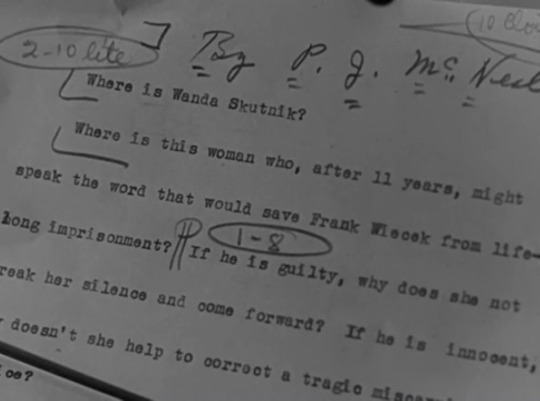
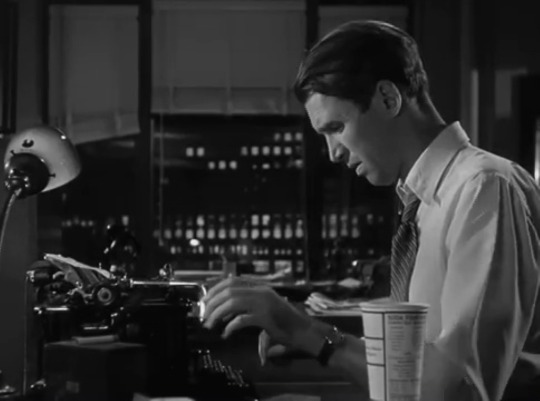
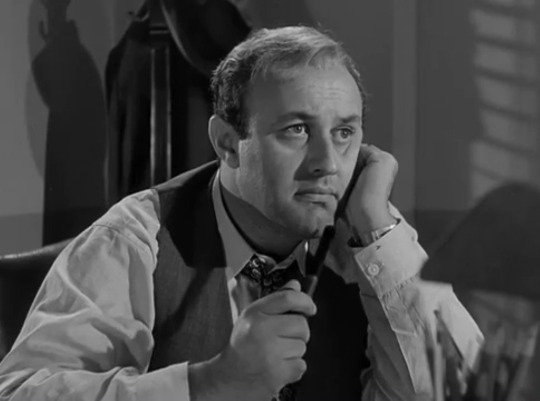
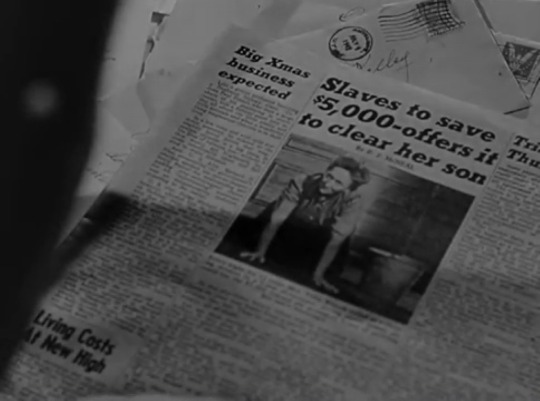
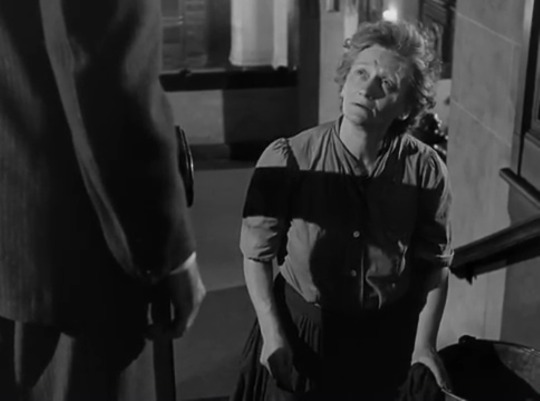

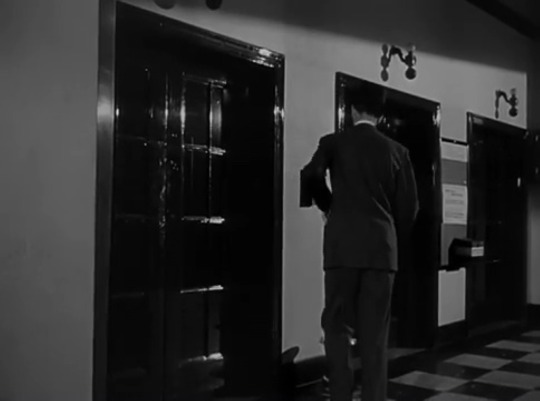
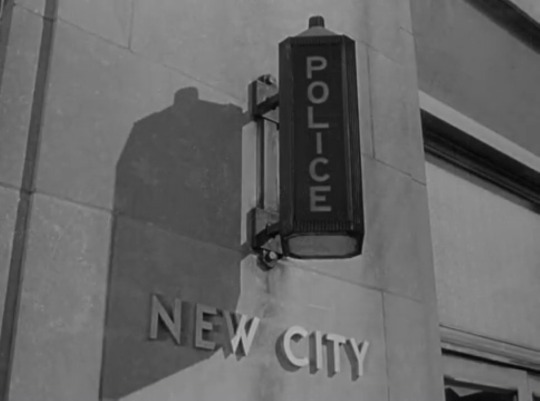
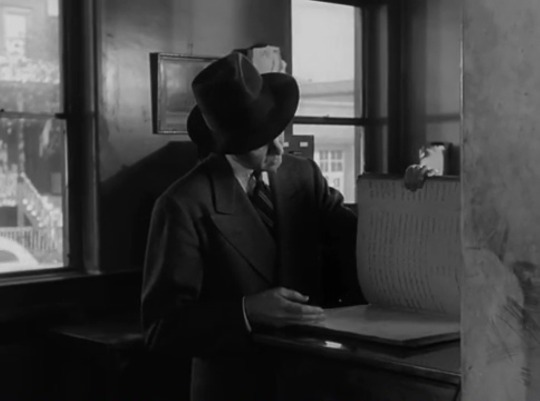
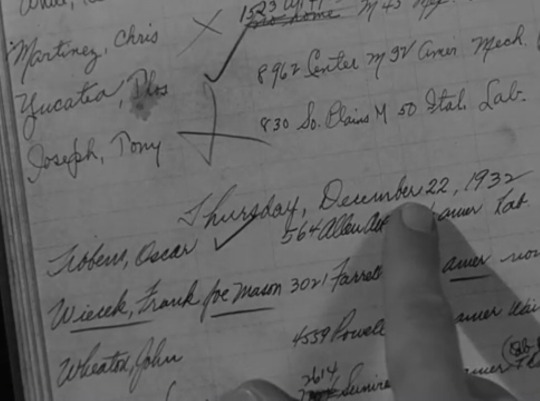
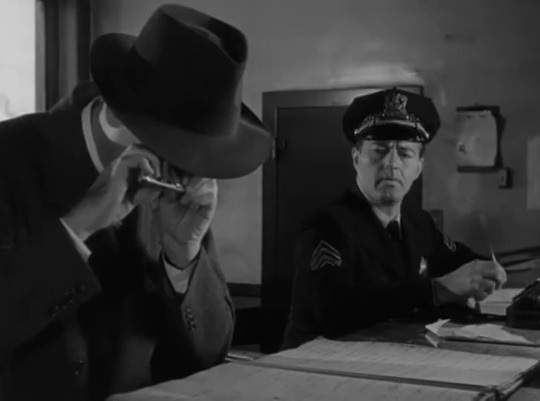

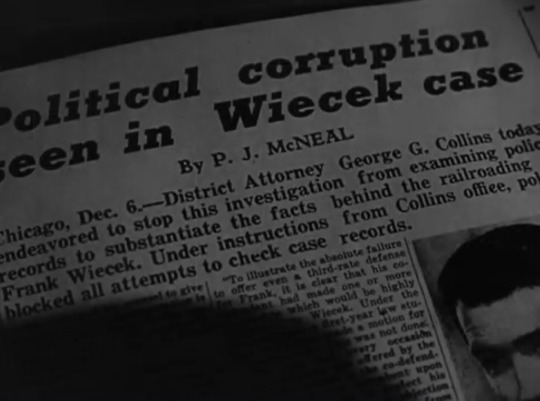
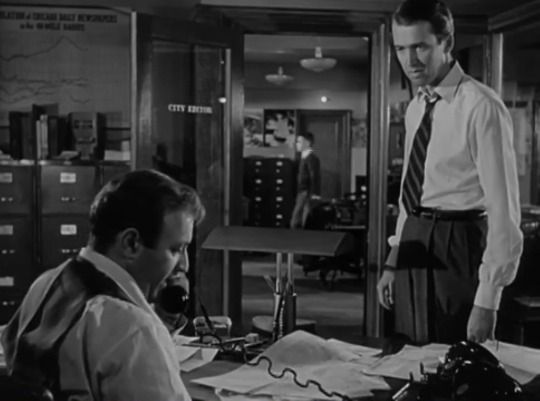
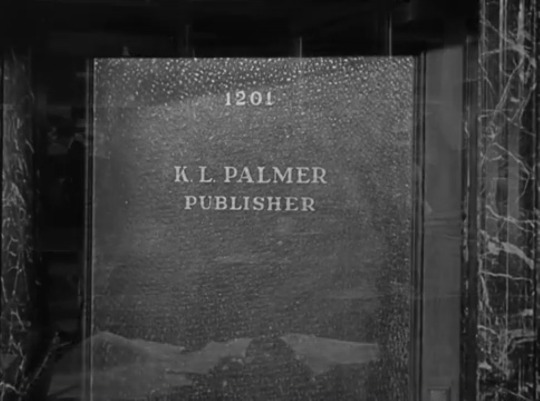
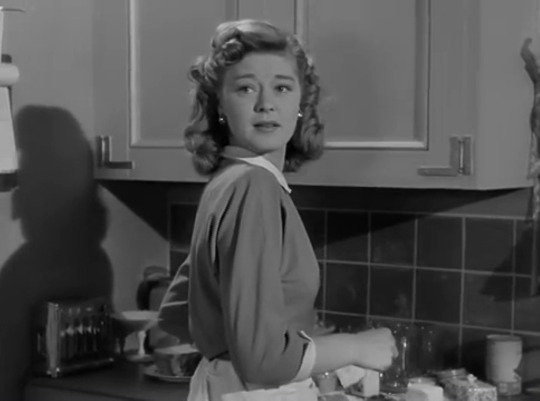
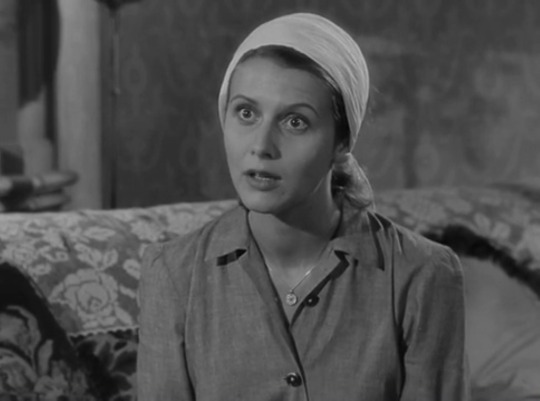
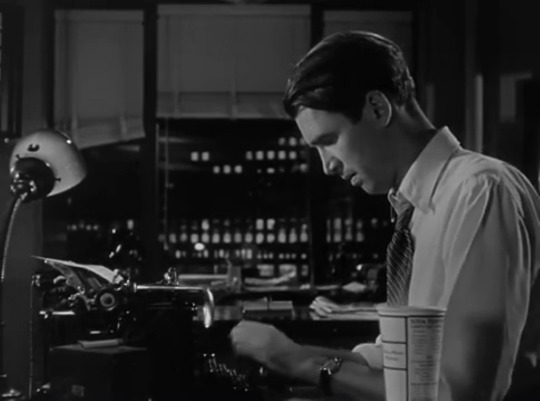
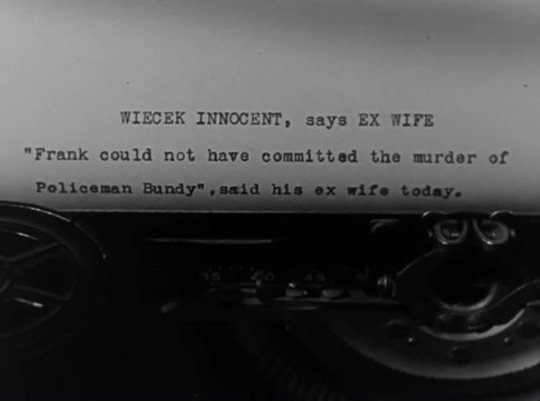
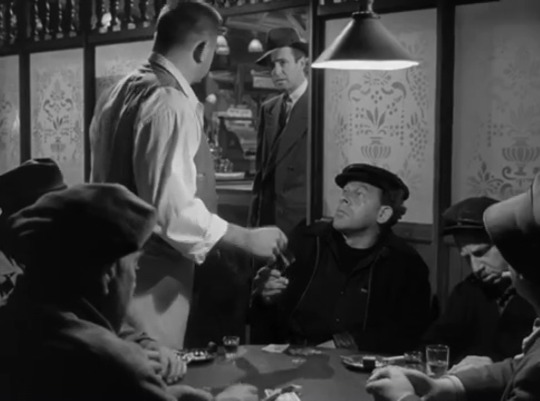
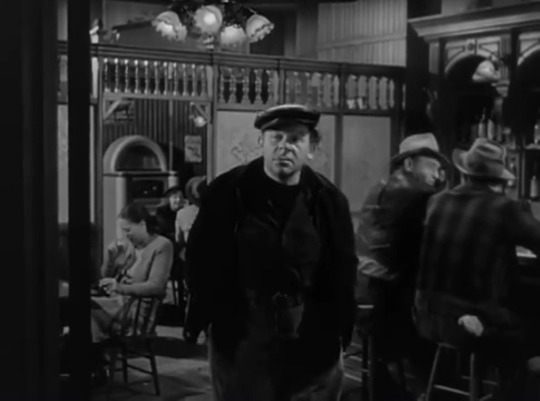
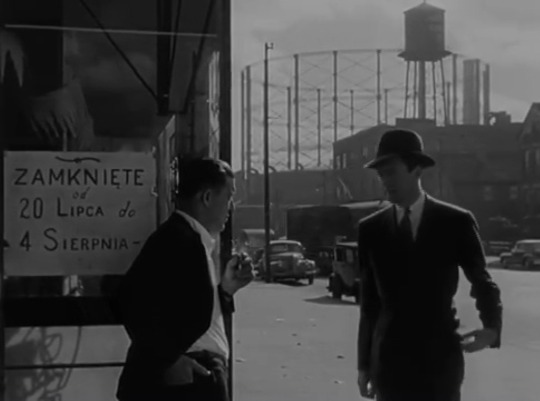
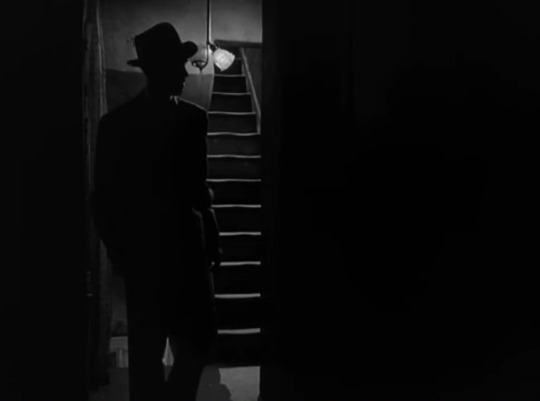
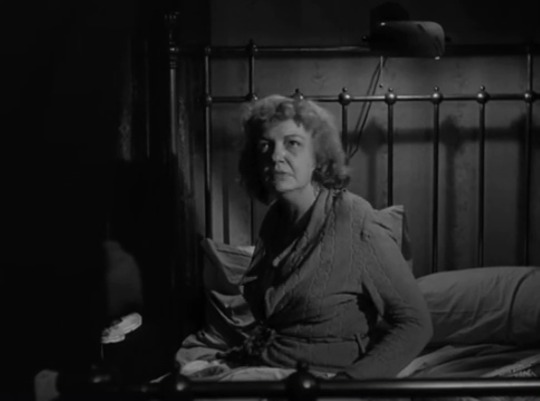
call northside 777, henry hathaway 1948
#call northside 777#henry hathaway#1948#james stewart#richard conte#lee j. cobb#helen walker#betty garde#kasia orzazewski#joanne debergh#howard smith#moroni olsen#a tree grows in brooklyn#the stranger#the dark corner#the virgin queen#blue velvet#eraserhead#fight club#zodiac#sputnik#banksy#david lynch#about photography#die brücke
6 notes
·
View notes
Text
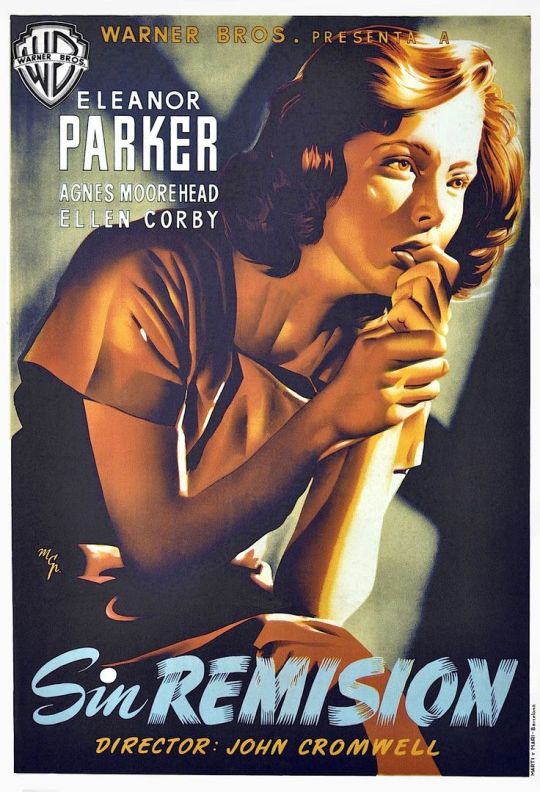

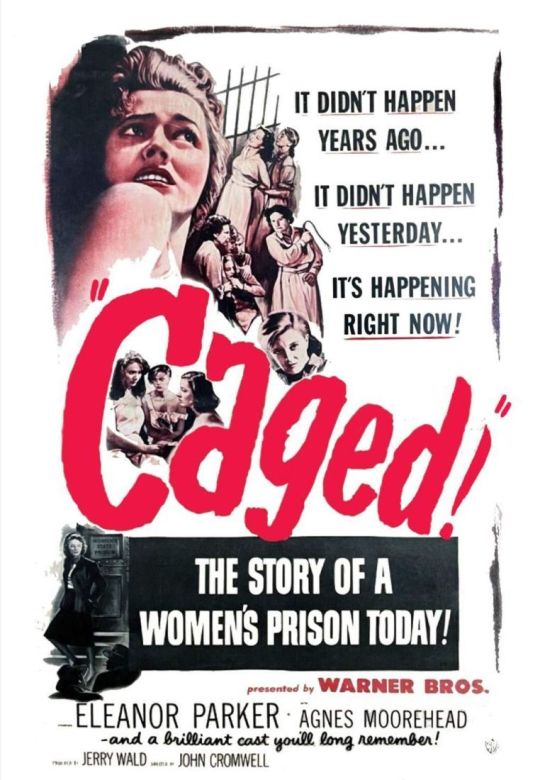

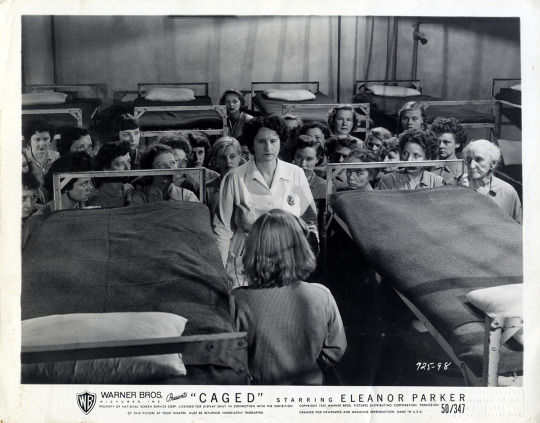
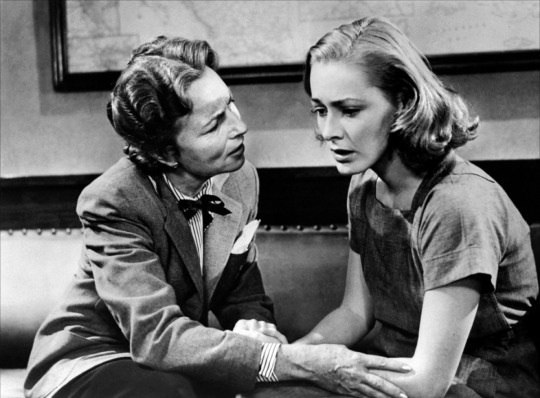




Caged (1950) John Cromwell
April 1st 2024
#caged#1950#john cromwell#eleanor parker#agnes moorehead#betty garde#hope emerson#jan sterling#ellen corby#lee patrick#gertrude michael#olive deering
19 notes
·
View notes
Text
A routine commercial flight was placed in jeopardy when they entered a mysterious air stream that not only increased their speed to an incredible amount, but actually hurled them through time. The first trip took them back to the time of the dinosaurs. The crew managed to recreate the events and once more hurled themselves through time. That time they found themselves in 1939. The runaways of this era were not designed for a plane of their requirements so they once more attemptted to travel in time in hopes of returning to 1961. ("The Odyssey of Flight 33", The Twilight Zone, TV)

#nerds yearbook#sci fi tv#tz#twilight zone#time travel#rod serling#justus addiss#the odyssey of flight 33#john anderson#paul comi#sandy kenyon#wayne heffley#harp mcguire#betty garde#beverly brown#nancy rennick#jay overholts#lester fletcher#robert mccord
4 notes
·
View notes
Text

Caged, 1950
9 notes
·
View notes
Text
Caged
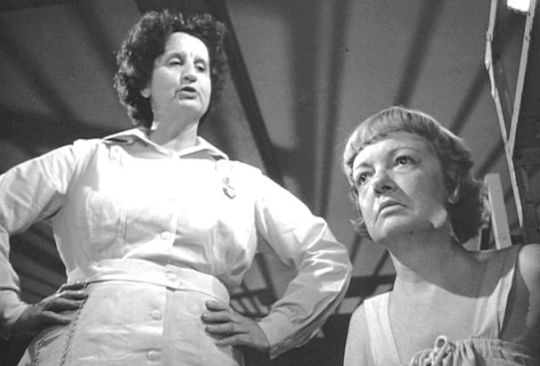
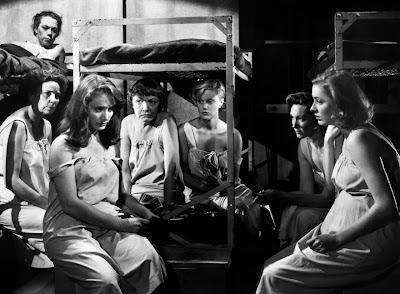
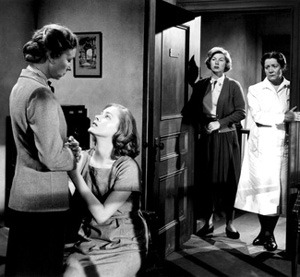
“Pile out, you tramps. It’s the end of the line!”
“In this cage, you get tough, or you get killed.”
“Who’s the cute trick?”
“Kindly omit the flowers.”
“Keep it active. She’ll be back.”
Screenwriter Virginia Kellogg went behind bars to capture slang and elements of prison routine, and boy did it pay off. John Cromwell’s CAGED (1950, TCM, Plex) is a punchy good time, even when it’s hectoring the audience about the need for prison reform. It set many of the tropes of the women’s picture, but stands on its own perched on the dividng line between camp and high drama. It’s also unusual in that it got veiled lesbianism and references to drugs and prostitution past the Production Code. Eleanor Parker stars as the young innocent sent to prison because she was in the car while her husband got himself killed trying to rob a gas station. She’s thrown into a world of corruption, sadism, sexuale exploitation and terrific character women. A lot of the fun comes from watching the situation change her, and Parker gives a carefully modulated performance in which the young innocent is as interesting and believable as the woman she becomes. She’s not the whole show. You also get Ellen Corby as a crazed husband killer, Jan Sterling as a dumb blonde, Betty Garde (the original Aunt Eller) as the recruiter for a shop-lifting ring, Lee Patrick as a vice queen who could be the dictionary illustration for “lipstick lesbian,” Olive Deering as a suicidal inmate, Jane Darwell as matron of the isolation room, Gertrude W. Hoffmann as a lifer and Gertrude Michael as a fallen society woman. Best of all are Agnes Moorehead, who could ring nuance out of a laundry list, as the sympathetic warden and Hope Emerson as the sadistic matron who looks on Parker as a source of income and possibly something more. Cromwell was always a whiz at directing actors and melds the cast into a solid ensemble. He and cinematographer Carl E. Guthrie create some powerful visuals, but one of the most stunning effects uses sound. In her first night in the cell block, Allen has to adjust to sleeping in a room full of people as the soundtrack fills with coughs, yawns, and sobs that gradually overwhelm her and us.
#prison films#women's prison films#john cromwell#virginia kellogg#eleanor parker#hope emerson#agnes moorehead#betty garde#gertrude michael#ellen corby#jan#jan sterling
3 notes
·
View notes
Text

1 note
·
View note
Text
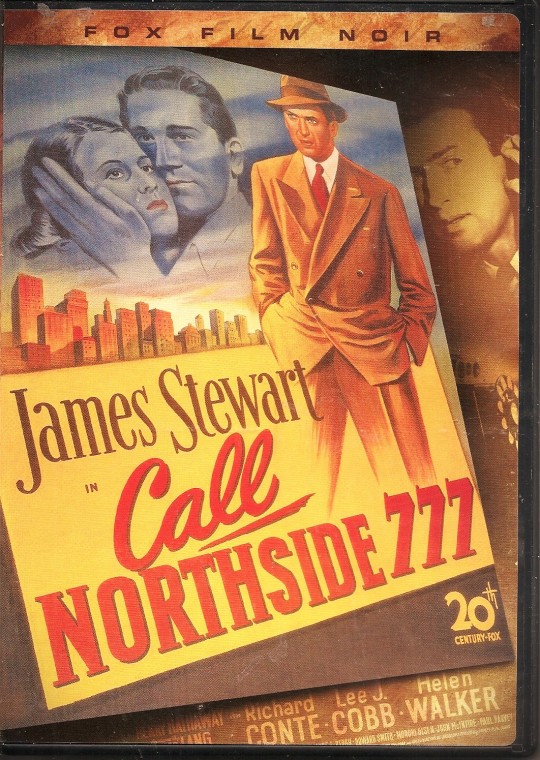
Bad Movie I have Call Northside 777 (1948)
#Call Northside 777#James Stewart#Richard Conte#Lee J. Cobb#Helen Walker#Betty Garde#Kasia Orzazewski#Joanne De Bergh#Howard Smith#Moroni Olsen#John McIntire#Paul Harvey#Robert Adler#Richard Bishop#Larry J. Blake#John Bleifer#Truman Bradley#Dollie Caillet#Al Capone#Michael Chapin#George Cisar#Jane Crowley#John Dillinger#Jimmy Dime#Abe Dinovitch#Rex Downing#Eddie Dunn#Lew Eckles#Ben Erway#Joseph Forte
1 note
·
View note
Text
Betty Parsons (1900-1982)
Betty Parsons born Betty Bierne Pierson January 31, 1900 – July 23, 1982 was an American artist, art dealer, and collector known for her early promotion of Abstract Expressionism. via W #PalianSHoW

View On WordPress
#abstract expressionism#American#american artist#American avant-garde#art collector#art dealer#avant-garde#Barbaralee Diamonstein-Spielvogel#Berenice Abbott#Betty Parsons#collector#Dusti Bongé#Judy Olausen#Judy Olausen Photography.#Lynn Gilbert#women art collectors
6 notes
·
View notes
Note
At the end of the Dracula poll, will you explain how each of the cast influences the final tone of/ any minor plot changes to the movie?
oh I’m happy to do that right now!
-Jimmy Stewart grounds the movie and is a terrific pick for Jonathan because his career was full of stories of ordinary men set into slowly unraveling, reality-challenging environments that irrevocably change their characters and push them past their limits—there are sketches of what Jonathan goes through already present in It’s A Wonderful Life, Rear Window, even the Thin Man sequel he was in. Jimmy brings the tone of boy next door, Capra-esque hometown normalcy that slowly gets turned upside down as he meets…
-Gloria Holden as the Count! who is pure gothic horror but laced with psychological complexity, wants and needs that push beyond the typical Universal horror aesthetic. She’s a perfect transition into the fantasy side of the story because she can meet Jimmy in his reality world….but chooses not to.
-the brides can’t possibly meet Jimmy in reality! They’re Betty, Lauren and Marilyn! They’re ethereal next level bombshells and the first sign this movie might trend a little camp. I expect their scene to dip into dream sequence imagery, and I wouldn’t be surprised if Vincente Minelli is brought in just to stage their entrance.
-I am hugely embarrassed to say I have not seen enough of Setsuko Hara’s work to tell you how her Mina impacts the tone, though I suspect she brings a quiet, steady, subtle quality that contrasts with Judy Garland’s mannered but sincere Lucy. There is absolutely an unnecessary talent show scene early on that gets Lucy singing in front of a crowd of adoring concertgoers.
-Toshiro Mifune needs no introduction. His Quincey is blindingly sexy and always finds the good lighting in every shot.
-Vincent Price’s Seward and Veidt’s Renfield up the, ahh, bisexual undercurrents of their scenes together into new dimensions. I fear again the movie tips a little into camp here.
-Sidney Poitier’s Holmwood brings us back to grounded reality; his performance is rooted in calm, subtle realism, with only the occasional explosions into grand emotional sweeps. This balances him really well with Judy’s Lucy, where she brings a flighty magical transparency and he brings the depth, intelligence, and calm.
-Mary Philbin suddenly tips the movie into silent film territory and goes a bit avante-garde as the agonized mother. It would be nice to have a shot here where Jonathan realizes, in some way, that he is suddenly soundless as pipe organ music ramps up over the scene and he’s left voiceless: he can only speak again when it’s too late to save her, and the movie switches back to talkie mode.
We haven’t cast some other players yet but this is what I’m seeing so far from the electorate’s choices :D
177 notes
·
View notes
Text

The 2001 premiere of Mulholland Drive brought together director David Lynch and stars Naomi Watts and Laura Elena Harring, celebrating what would become one of the most iconic films of the early 21st century. Originally conceived as a television pilot, the project evolved into a feature film after its initial rejection by network executives. Lynch reworked the narrative, blending mystery, surrealism, and psychological depth to craft a cinematic masterpiece. Mulholland Drive premiered at the Cannes Film Festival in May 2001, where Lynch received the Best Director award, marking a significant milestone in his career.
Set in Los Angeles, the film delves into themes of identity, ambition, and the dark underbelly of Hollywood. Naomi Watts, in her breakthrough role, delivered a mesmerizing performance as Betty Elms, a hopeful actress entangled in a web of intrigue. Laura Elena Harring portrayed Rita, a woman with amnesia, whose enigmatic presence drives much of the plot’s mystery. Lynch’s direction, combined with Angelo Badalamenti’s haunting score, created a dreamlike atmosphere that captivated audiences and critics alike. The film's nonlinear storytelling and surreal elements became defining characteristics, solidifying Lynch's reputation as a visionary filmmaker.
Following its release, Mulholland Drive garnered critical acclaim and multiple awards, including an Academy Award nomination for Best Director. It has since been celebrated as a cinematic masterpiece, ranking on numerous lists of the greatest films of all time. The collaboration between Lynch, Watts, and Harring became a cultural touchstone, embodying the essence of avant-garde cinema. The 2001 premiere marked the beginning of the film’s enduring legacy, as it continues to inspire filmmakers and audiences with its enigmatic brilliance and exploration of the subconscious mind.
via The Shrouded Past
7 notes
·
View notes
Text

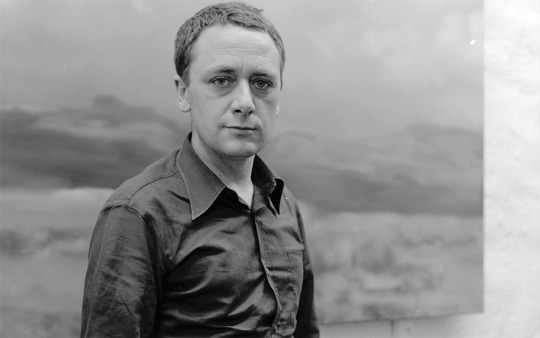






Gerhard Richter was born in 1932 in Dresden, Germany, during the rise of the National Socialist German Workers' Party, or the Nazi Third Reich. Notably, some of Richter's relatives were directly involved in the Nazi movement, namely his father, a schoolteacher, and an uncle. Richter's mother, the daughter of a concert pianist, encouraged her son's early talent for draftsmanship. In 1948, at the age of 16, Richter quit his formal education and took up an apprenticeship as a set painter for the theater. The wake of war proved traumatic for Richter: two of his uncles had been killed in action, and his father had lost his employment. This family turmoil, coupled with the artist's early artistic training under postwar communist-driven ideology, eventually led Richter to seek his creative inspiration in nature over any political or religious affairs or philosophies.
Beginning in 1951, Richter studied at the Kunstakademie, Dresden, where he painted murals and political banners commissioned by state-owned businesses. During this time, the East German communist regime imposed a Social Realist style on all practicing artists; this policy effectively turned art to the service of political propaganda. In keeping with this development, the government banned exhibitions of American Pop art and Fluxus. These circumstances severely limited Richter's fledgling artistic style, as he was instructed to paint only landscapes in a manner heavily informed by pastoral romanticism.
Richter married Marianne Eufinger in 1957, and the couple celebrated the birth of a daughter, Betty, in 1966. Two years later, during a visit to West Germany in 1959, Richter discovered the work of contemporary artists Jackson Pollock and Lucio Fontana. Pollock's uninhibited splashes of color across canvas had a profound impact on Richter, provoking him to reflect on his own artistic ideology. Indeed, Richter began to question how a realist style did not seem to capture the energy, sense of truth, and spirit of artistic liberation that he observed in the abstract work of his American and European contemporaries. Supposedly "realistic", his work seemed to fail to reflect the underlying, tumultuous nature of reality itself.
In 1961, just prior to the government's official completion of the Berlin Wall, Richter moved to Düsseldorf. Once again enrolling at the local Kunstakademie, Richter intended to work in a more uninhibited, avant-garde manner; in the process of rethinking his approach to art making, he purposely destroyed many of his early paintings from the 1950s and the 1960s.
Continue reading https://www.theartstory.org/artist/richter-gerhard/
61 notes
·
View notes
Text
Horror Movie of the day: Opera (1987)
The Tragedie of Macbeth. Also known as “The Scottish Play” among those who practice theater, this Shakespeare’s tragedy is infamous for the curse it allegedly carries onto those who bring up its name beyond rehearsal: they shall meet disaster in their lives, ranging from seeing their careers ruined to dying on stage. As such, Betty is quite understandably nervous of her debut in the world of opera when she’s asked to replace lead Mara Cecova actress after she suffered a car accident while leaving an avant-garde version the play.
Indeed, soon enough her apprehension is proven to be well placed, for people around the play start dying violently. At the hands of someone obsessed with her.
Being the last collaboration between Dario Argento and Daria Nicolodi, this film also marks the end of an era for the Italian director, being the last of his films to garner critical acclaim after a troubled production to such a degree the people involved believed Macbeth is indeed a cursed name. Born from Argento's own experience with the world of opera (as he contemplated directing a play for a while), the end result puts the stylish opulence of this medium against the more abstract world of modern theater, and blends them through the crazy horror styling Argento is known for in a dementedportrayal of murderous obsession. It goes from strident metal music to dissonant serenity in a heartbeat, while retaining the less colorful but nevertheless stunning photography of his 80's body work through and through.
If there’s any warts to the film, is that all of this ends up somewhat undercut by having one of the clumsiest, stupidest and most poorly executed twist endings in cinema history; Red Dragon this is not. Fortunately, the journey up to that point is more than worth the ride (and said ending is easy to ignore thanks to the movie's structure).

#horror movies#halloween movie#italian cinema#giallo#dario argento#daria nicolodi#cristina marsillach#ian charleson#urbano barberini#william mcnamara#antonella vitale#barbara cupisti#coralina cataldi-tassoni#mcbeth#opera#roskirambles
3 notes
·
View notes
Text







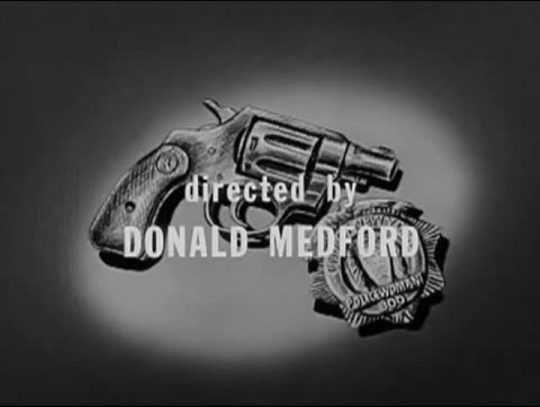








From the Golden Age of Television
Series Premiere
Decoy - Stranglehold - Syndicated - October 14, 1957
Crime Drama
Running Time: 30 minutes
Written by Steven Gardner
Produced by Everett Rosenthal
Directed by Donald Medford
Stars:
Beverly Garland as Patricia "Casey" Jones
Joanne Linville as Molly
Arch Johnson as Donovan
Bruce Gordon as Lt. Andrews
Betty Garde as Landlady
Anna Minot as Policewoman
#Stranglehold#TV#Decoy#1950's#1957#Syndicated#Crime Drama#Beverly Garland#Joanne Linville#Arch Johnson#Bruce Gordon#Series Premiere
4 notes
·
View notes
Text
In 1961, a routine commercial flight was placed in jeopardy when they entered a mysterious air stream that not only increased their speed to an incredible amount, but actually hurlled them through time. The first trip took them back to the time of the dinosaurs. The crew managed to recreate the events and once more hurlled themselves through time. This time they found themselves in 1939. The runaways of that era were not designed for a plane of their requirements so they once more attempted to travel in time in hopes of returning to 1961. ("The Odyssey of Flight 33", The Twilight Zone, TV)
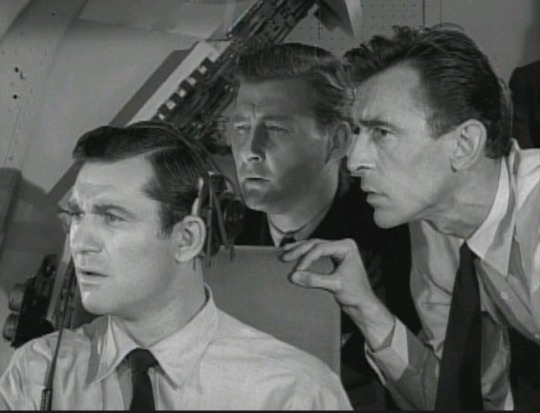
#nerds yearbook#sci fi tv#time travel#1961#tz#twilight zone#rod serling#justus addiss#john anderson#1939#dinosaur#paul comi#sandy kenyon#wayne heffley#harp mcguire#betty garde#beverly brown#nancy rennick#jay overholts#lester fletcher#robert mccord
5 notes
·
View notes
Text

Histoire du planning familial, de Malthus à la constitutionnalisation de l’avortement
Marion Sigaut, historienne, nous retrace l’historique du planning familial en France dont les origines sont américaines. Partant des idées de Malthus, nous passons par l’entre-deux-guerres avec les années folles en France, Margaret Sanger aux États-Unis avec l’International Planned Parenthood Federation ; la loi française de 1920 qui réprimait la provocation à l’avortement et la propagande anticonceptionnelle ; le Conseil supérieur de la natalité, puis le code de la famille, l’allocation de salaire unique, etc.
Ce panorama dépeint l’héritage U. S. d’Alfred Kinsey dans les directives de l’OMS pour l’éducation mondialisée des enfants ; l’entreprise de démolition des allocations familiales françaises par Pierre Mendès France ; l’influence d’auteurs comme Betty Frieman (U. S. A.) dans “l’émancipation” des femmes. ; le passage de l’allocation familiale à l’allocation de garde et la promulgation des crèches ; l’avènement du concept de paternalisme, puis de patriarcat ; la propagande démographique servant à faire accepter la dénatalité ; la mise au point de la pilule par des grandes fortunes américaines (fondations Rockefeller, Ford et McCormick), ainsi que sa défense militante en France via Marie-Andrée Lagroua Weill-Hallé et Évelyne Sullerot ; l’affaire des époux Bac qui a servi de tremplin à la mise en place du programme du Planning Familial, puis à l’abolition de la loi de 1920 et à l’élaboration de la loi Neuwirth qui promeut l’information sur les moyens de contraception dans le but de lutter contre l’avortement ; les glissements du sens des concepts [fenêtre d’Overton] tels que les “bébés non désirés” qui deviennent des “bébés encombrants”, puis des “bébés surnuméraires” ; l’opposition de Maurice Thorez (communiste, PCF) au programme du Planning Familial ; le militantisme de certains Protestants, de Sionistes, de certaines loges maçonniques ; l’échec de la pilule auprès des masses populaires, mais la réussite de la légalisation sur l’avortement ; l’aboutissement au contraire de ce qui était annoncé : peu de contraception, mais davantage d’avortements ; etc.
Enfin, la présentation du programme du Dr Richard Day annoncé lors d’une conférence en 1969 à la Pittsburgh Pediatric Society devant un parterre de professionnels de la santé. Programme dénoncé une vingtaine d’année plus tard, en 1988, par le Dr Lawrence Donegan dans un entretien accordé à la journaliste Randy Engel.
‣ Chaîne Youtube « Marion Sigaut », « De Malthus à l’Avortement », pub. 6 avr. 2024, (sans espace) https :// www . Youtube . Com / watch ? v=262LAgGLbBs (cons. 6 avr. 2024). ‣ Notes personnelles complètes au sujet de cette conférence (trop conséquentes pour pouvoir les publier via un post sur ce blog). – Pierre-Hector_Notes_Marion-Sigaut_Planning-familial.pdf —
Rem. 1 : Il serait intéressant de mettre cette conférence instructive et éclairante en parallèle de la notion de sacrifice, collectivement et individuellement, notion reliée à celles de la castration, de l’amputation, de l’impuissance, de la perte, du deuil, des rapports de pouvoir, des peurs ancestrales face aux éléments naturels, du bouc émissaire, etc. – Synthèse succincte sur la notion de sacrifice au sein du catholicisme. – Chaîne Youtube « Le Verbe Haut », « [CONFÉRENCE] Alain Pascal et Sylvain Durain "Le sacrifice humain VS Sacrifice divin" », pub. 28 mai 2023, https://www.youtube.com/watch?v=l8zTWRO9s1c (cons. 16 avr. 2024).
Rem. 2 : À mettre aussi en parallèle de l’interview de Pierre Hillard par le Media 4-4-2, « Révolution française, géopolitique et mystique », pub. 4 avr. 2024 (18). – Media 4-4-2, « Révolution française, géopolitique et mystique », pub. 4 avr. 2024, https://www.tumblr.com/pierre-hector/747037981668474880/r%C3%A9volution-fran%C3%A7aise-g%C3%A9opolitique-et-mystique?source=share
—
#histoire#marion sigaut#planning familial#malthus#pilule#avortement#émancipation#patriarcat#sacrifice#planned parenthood
3 notes
·
View notes
Text
TV anthology series “Colgate Theatre” premiered on NBC on January 3, 1949 #OnThisDay The first episode, “Fancy Meeting You Here” was directed by Hal Keith and starred Eva Condon, Betty Garde, and Mary Wickes.
5 notes
·
View notes